Are you looking to make a sustainable choice when it comes to utensils? Contemplating between Acacia Wood Vs Bamboo Utensils?
In this article, we will explore the differences between acacia wood and bamboo utensils.
Both materials have gained popularity for their eco-friendly qualities, but which one is better?
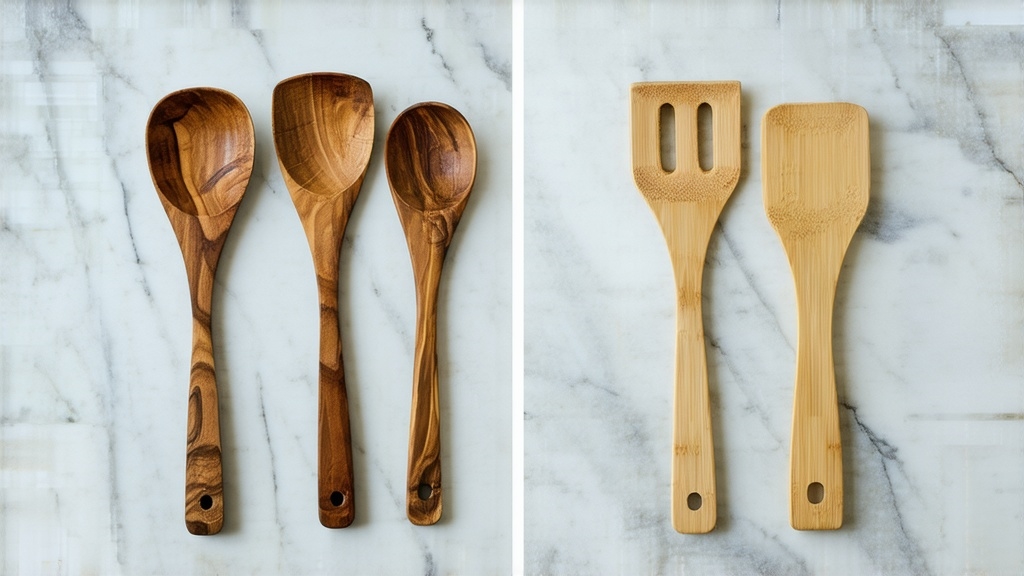

We will examine factors such as sustainability, durability, aesthetics, maintenance, and price to help you make an informed decision.
So, let’s dive in and discover the pros and cons of acacia wood and bamboo utensils.
Key Takeaways
- Acacia wood utensils have a higher carbon footprint compared to bamboo utensils.
- Bamboo utensils have a significantly lower carbon footprint compared to acacia wood utensils.
- Acacia wood utensils are known for their strength and durability.
- Bamboo utensils are more budget-friendly compared to acacia wood utensils.
Acacia Wood Vs Bamboo Utensils: Sustainability and Environmental Impact

Acacia wood vs Bamboo utensils, which one is more sustainable and environmental friendly?
When considering sustainability and environmental impact, it’s important for you to understand the significant differences.
The overall carbon footprint of acacia wood utensils compared to bamboo utensils.
Acacia wood is known for its durability and strength, making it a popular choice for utensils.
However, the production of acacia wood utensils requires more energy and resources compared to bamboo utensils.
Bamboo grows rapidly and abundantly, making it a highly sustainable material.
Additionally, bamboo requires minimal water and pesticides for growth, further reducing its environmental impact.
In terms of carbon footprint, bamboo utensils have a significantly lower impact compared to acacia wood utensils.
Durability and Longevity

To assess the durability and longevity of acacia wood vs bamboo utensils, consider their respective materials and construction.
Acacia wood is known for its strength and durability, making it a popular choice for utensils.
It has a tight grain structure that helps prevent warping and cracking, ensuring that the utensils remain intact over time.
Bamboo, on the other hand, is also durable but may not be as strong as acacia wood.
However, bamboo utensils are often treated with oils or finishes to enhance their durability.
Additionally, bamboo is naturally resistant to moisture, which can help prolong its lifespan.
| Durability | Acacia Wood | Bamboo |
|---|---|---|
| Strength | High | Medium |
| Resistance to Warping/Cracking | High | Medium |
| Resistance to Moisture | Medium | High |
Aesthetics and Natural Beauty
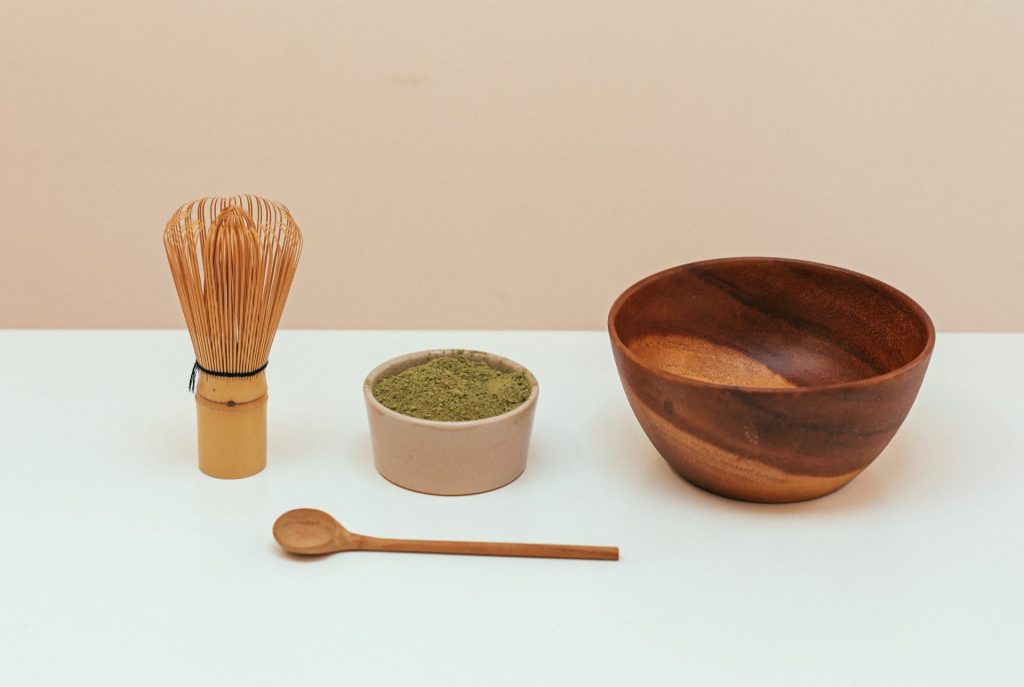
One key aspect to consider when comparing acacia wood and bamboo utensils is their visual appeal and natural beauty.
Both materials have a distinct aesthetic that can enhance the overall experience of using these utensils.
The natural colors range from light to dark brown, adding a touch of elegance to your cooking space.
On the other hand, bamboo utensils have a light and clean look, with a pale yellow hue that complements a modern or minimalist kitchen design.
The smooth texture and straight grain of bamboo create a sleek and contemporary feel.
Ultimately, the choice between acacia wood vs bamboo utensils comes down to personal preference and the desired aesthetic for your kitchen.
Maintenance and Care
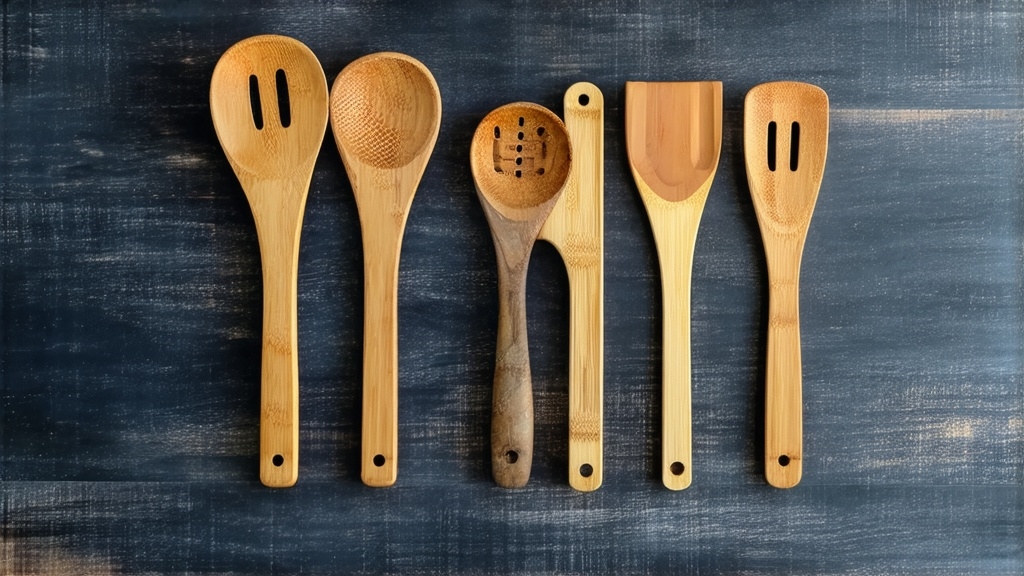

Both acacia wood and bamboo utensils can last a long time with proper care and maintenance.
Taking care of your acacia wood or bamboo utensils is essential to ensure their longevity and maintain their natural beauty.
Both materials require similar care, but there are a few key differences to note.
Firstly, it’s important to wash your utensils by hand using mild dish soap and warm water.
Avoid soaking them for extended periods or putting them in the dishwasher, as this can cause warping or splitting.
After washing, make sure to thoroughly dry your utensils to prevent moisture from seeping into the wood and causing damage.
To keep your utensils looking their best, it’s recommended to periodically apply a food-safe oil, such as mineral oil or coconut oil, to prevent drying and cracking.
This will also help to maintain the natural luster of the wood.
Price and Affordability
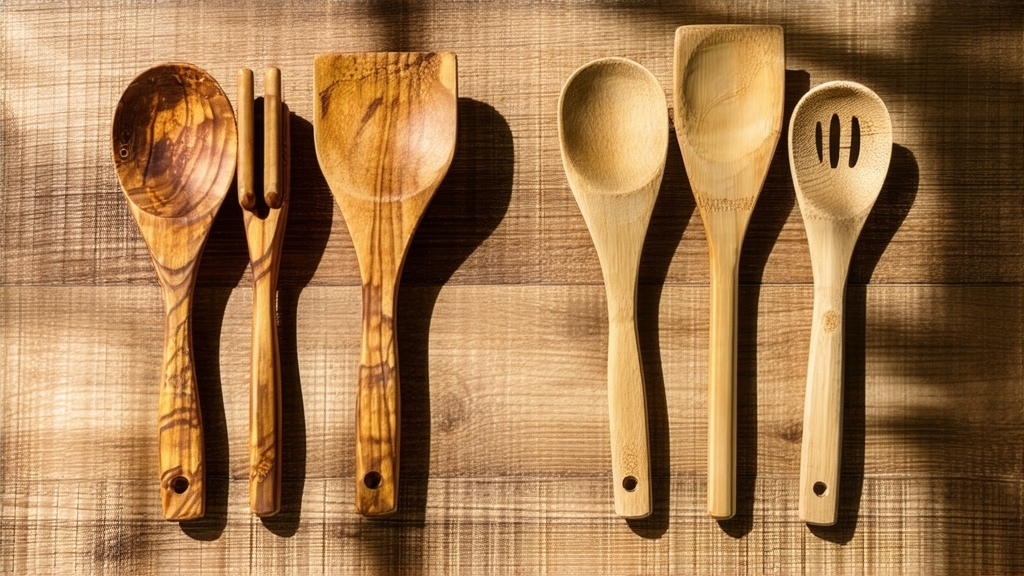

When comparing the price and affordability of acacia wood and bamboo utensils, you’ll find that bamboo utensils tend to be more budget-friendly.
Bamboo is a natural, fast-growing resource that’s widely available, making it a cost-effective option for utensils.
The production process of bamboo utensils is less labor-intensive compared to acacia wood utensils, further contributing to their lower price.
Additionally, bamboo utensils are often mass-produced, which allows manufacturers to offer them at a more affordable price point.
On the other hand, acacia wood utensils are generally more expensive due to the scarcity of acacia wood and the extensive processing required to transform it into utensils.
While both materials offer durability and sustainability, bamboo utensils offer a more economical choice for those seeking affordable and eco-friendly utensils.
Bamboo vs Acacia Wood: The Final Verdict
Acacia wood is ideal for furniture due to its natural water-repelling oils. It’s resistant to wear and less likely to warp. Bamboo is a cost-effective but less durable alternative. It needs more care to prevent mold and insect attacks. Your choice between bamboo and acacia should consider your needs, budget, and maintenance readiness.

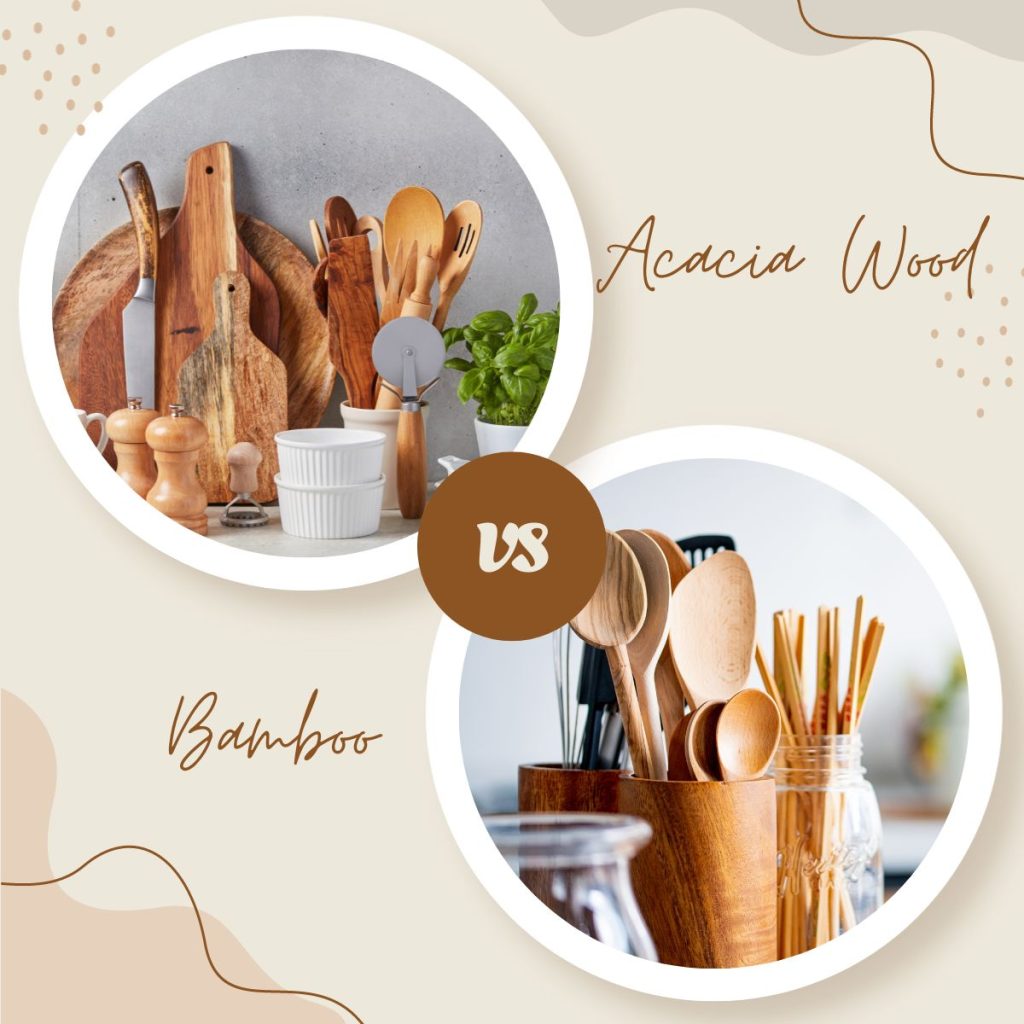








Konnichiwa! (Hello!) I'm Pat Tokuyama, a Japanese tofu cookbook author, who travels for music, food, and adventure. If you like Japanese tea, checkout some of the newestorganic japanese tea, matcha bowls and noren and more!
** Curious about the Plant Based Japanese Cooking Club? ** Learn more here!